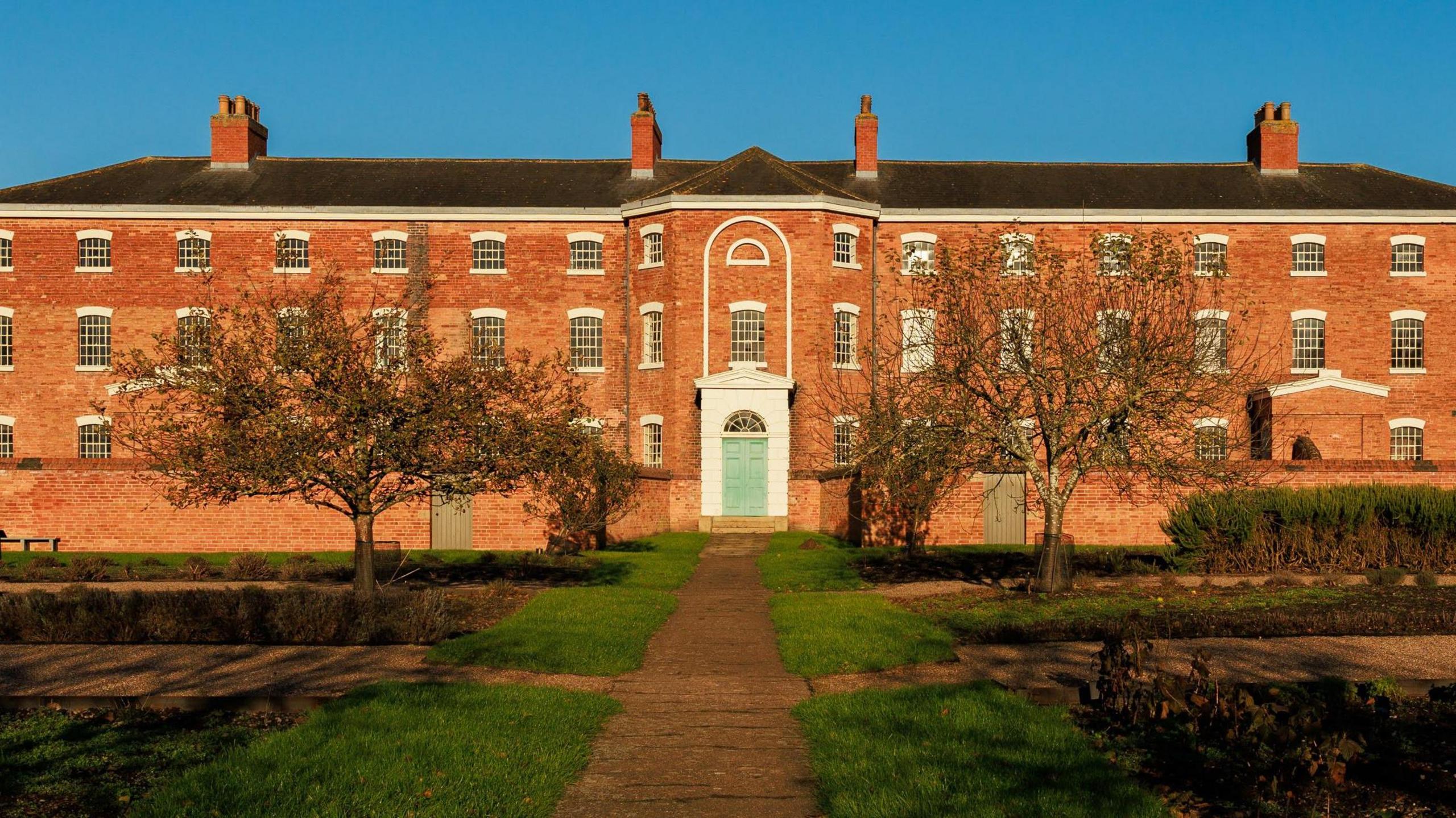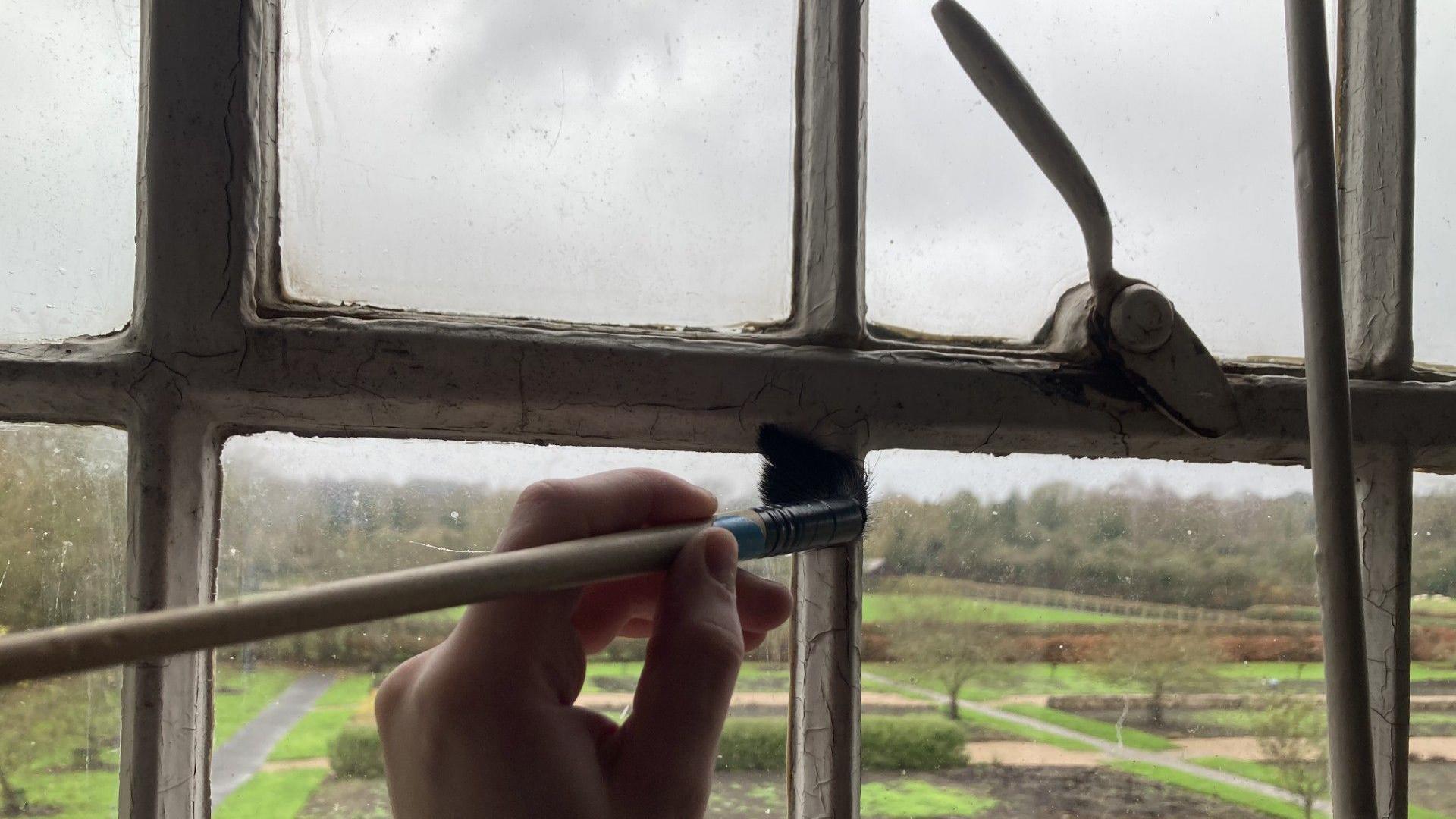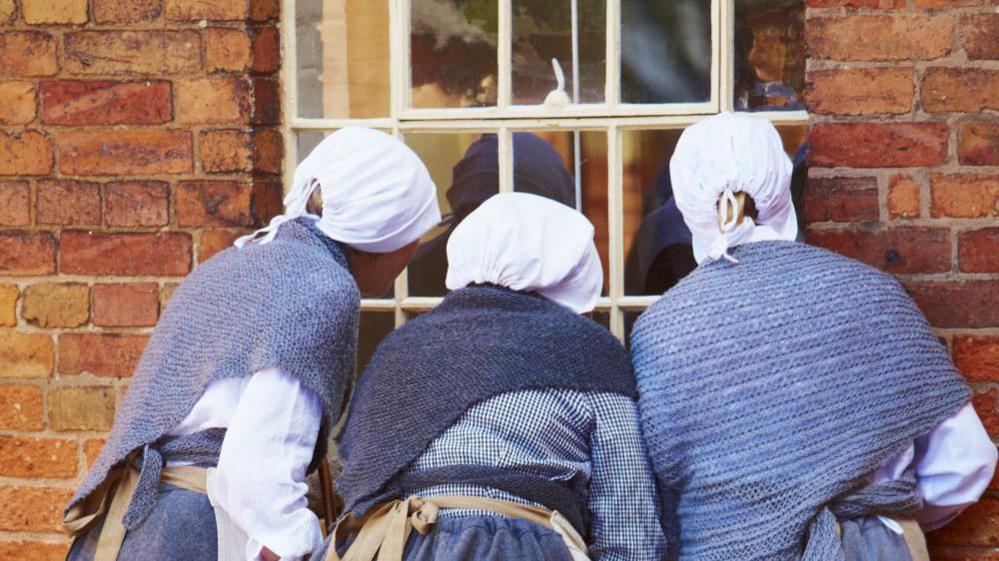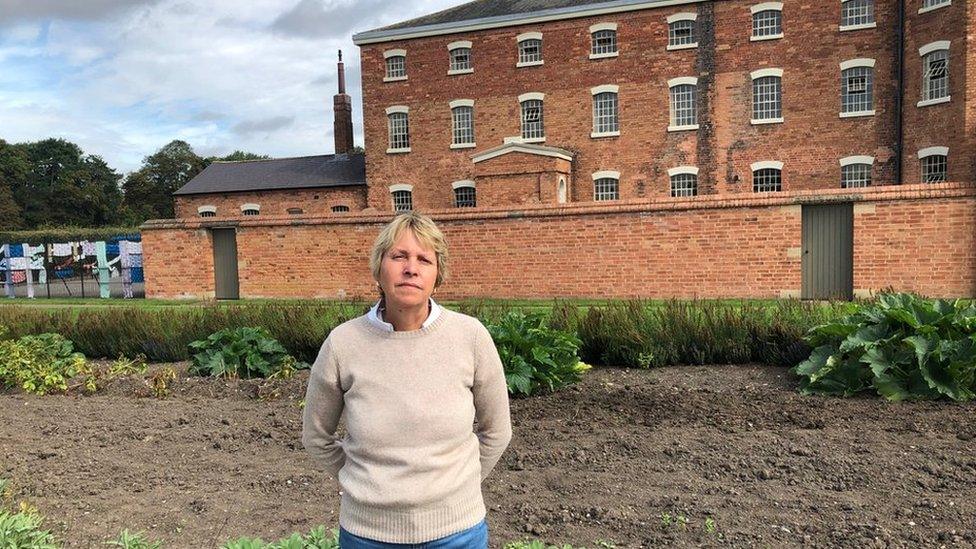Workhouse museum to reopen after winter clean

The workhouse is more than 200 years old and is the best preserved example of its kind
- Published
Pony hair brushes, lambs' wool dusters and targeted dehumidifiers have been used to get a heritage attraction ready for reopening.
The Workhouse and Infirmary in Southwell, Nottinghamshire, and its collection of 1,200 objects have been cleaned during a winter closure but will welcome visitors from the middle of this week.
National Trust staff said they had to deal with mould, insects and clinging dust to keep the building, which dates from 1824, in good condition.
They said the process was a "balancing act" between keeping everywhere clean without damaging it with overly abrasive tools or harsh chemicals.

A variety of natural fibre brushes are used to remove dust without causing damage
Workhouses were set up to give the poor food and accommodation in return for long hours of labour.
The National Trust said Southwell was the best preserved example of the hundreds which at one time dotted Britain.
During the months it is closed, fixtures and fittings are cleaned literally "top to bottom" with all areas, from ceiling to floor, given attention.
Collections and house officer Erin Huthwaite said: "We are careful about the tools we use.
"We use a range of natural fibres, including hogs' hair brushes, pony hair brushes, goat hair brushes, and lambs' wool dusters.
"The coarser brushes can be used on furniture, banisters, fireplaces etc, while the softer brushes are reserved for more delicate items, like those with paint or details that we don't want to flake off."

The workhouse recreates some of the sights and sounds of a Victorian institution
One of the principle issues is, at first glance, surprisingly mundane.
"One of the main concerns in an old building like this is dust," said Ms Huthwaite.
"If it settles on to surfaces or into gaps, and is left to sit, it can cement and become incredibly difficult to remove.
"It is also largely made up of organic matter, so can provide fuel for mould growth, or attract pests that feed on it."
When the cleaning work has been completed, the workhouse is ready to give visitors a glimpse of a bygone era.
Property operations manager Victoria Mason-Hines said: "Charles Dickens's Oliver Twist painted a bleak picture of life in the workhouse.
"However, our focus here is to show that although harsh and monotonous, aspects such as education, medical care or diet may have been better for the poor than in their own homes.
"The Workhouse not only tells a powerful and enlightening story of how it provided for the poorest in society but how it was pivotal in the development of our national health and welfare system."
The Workhouse and Infirmary will reopen on Wednesday.
Get in touch
Tell us which stories we should cover in Nottingham
Follow BBC Nottingham on Facebook, external, on X, external, or on Instagram, external. Send your story ideas to eastmidsnews@bbc.co.uk, external or via WhatsApp, external on 0808 100 2210.
Related topics
- Published25 October 2019
